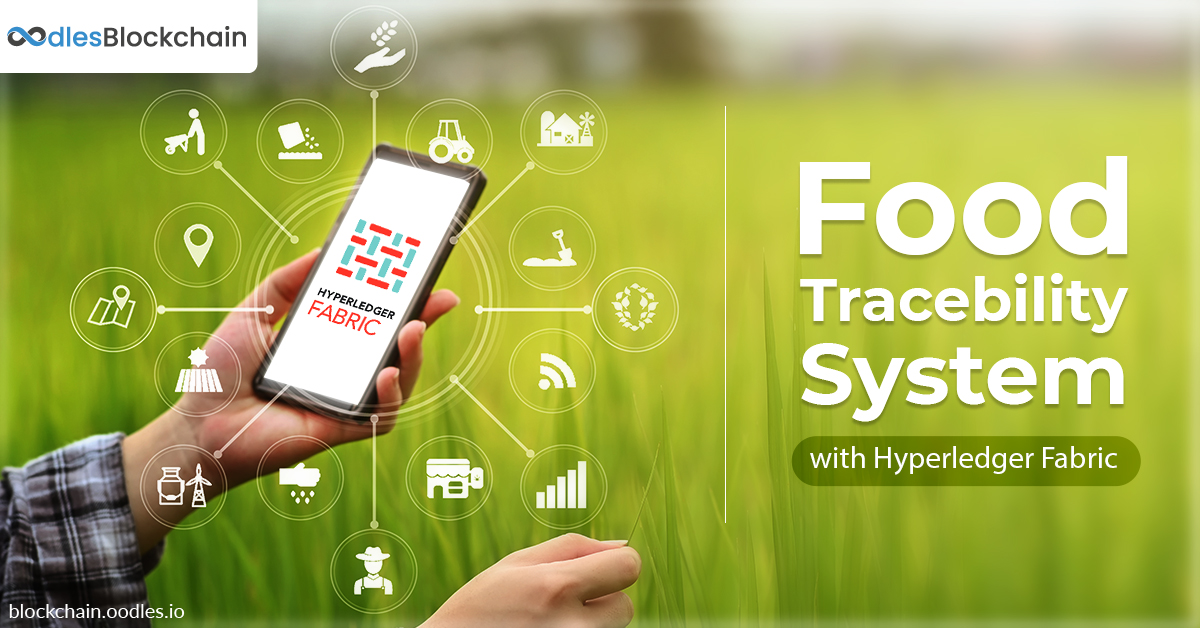-
In this blog, we will analyze how blockchain-powered platforms like Hyperledger Fabric are enabling solutions for food traceability systems. A case in point is the food giant Walmart's move to develop a food traceability system using Hyperledger Fabric.
We usually don’t think much about our safety when consuming food. It is because today’s food system is quite modernized. It gives us access to fresh produce all year round. We can buy exotic foods from around the globe. We have a wide range of food variety available than our ancestors could have had.
Modern Food System | Challenges
Occasionally, the same food system can make us sick. In the year 2018, more than 18 outbreaks of foodborne illness were reported in the USA, including the E. coli outbreak in romaine lettuce. People talk about strengthening the food supply chain, but it is not a chain, it is a complex network. So, when there is an outbreak caused by a food-borne disease, it can take days, if not weeks, to finds its source. If investigators fail to point to a specific farm or farms, the government adopts the usual practice of advising people to avoid using products grown in that specific area. It even advises avoiding the type of product. Due to this, Walmart removed millions of bags of lettuce, while consumers stopped trusting romaine lettuce altogether.
Better traceability and transparency could have saved Walmart to act fast and safeguard the livelihood of farmers. It could have that by only discarding produce from the affected farms.
Also Read: Seafood Supply Chain Management with a Hyperledger Fabric Solution
Finding Solutions with Blockchain
Walmart and other key food players have always been interested in enhancing traceability and transparency in the food system. After many trials and errors, now they are relying on blockchain to make a traceable food supply chain.
Food Supply Chain Traceability and Transparency with Blockchain Platforms like Hyperledger Fabric
Creating a (traceability) system for the entire food supply ecosystem is always a challenge. At Oodles, we think that blockchain technology is a good fit to address this problem with the Hyperledger app development services. Blockchain enables trust, immutability, and transparency in the business ecosystem. In the past, many companies have tried to create a traceability system, but they never scaled because they were centralized databases. Blockchain is a decentralized, shared ledger that can enhance the legacy food system. Given the blockchain’s potential in business, Walmart decided to develop two proof of concept (POC) projects.
Choosing the Blockchain PlatformWalmart’s IT team considered various blockchain technology to develop a PoC, and eventually, they went with Hyperledger Fabric. They had looked into other options like Ethereum, and Burrow projects. However, Hyperledger Fabric was their choice for development as it met most of their requirements for right blockchain technology. Hyperledger Fabric is an enterprise-grade blockchain platform with provisions for creating permissioned business solutions. Another advantage of using it was that is an open-source, vendor-neutral blockchain. That said, it was obvious that multiple parties, including Walmart’s suppliers and competitors, would use the food traceability system. Hyperledger Fabric provided that open underlying technology ecosystem.
Hyperledger Fabric
One of the Hyperledger projects hosted by The Linux Foundation, Hyperledger Fabric is a blockchain framework implementation. It enables blockchain developers to develop blockchain applications or solutions with a modular architecture. Hyperledger Fabric comprises of components like consensus and membership services that are plug-and-play. It also uses container technology to host and execute smart contracts known as “chaincode”, which is essentially the application logic of the system.
Also Read: Industry-Specific Use Cases of Hyperledger Frameworks
The Proof-of-Concept
Walmart announced the two projects in October 2016; one for tracing the provenance of mangoes it sold in the US stores and the other was for tracing pork sold in China stores. Also, take a look at our custom PoC development services.
For the mango PoC solutions, the team had to identify the farm from which the mangoes came, as fast as possible. It took more than seven days for the team to get an answer.
The Walmart Technology team analyzed their processes as well as their suppliers’ to develop the right application. They worked with GS1 (the standards authority in barcodes and labeling) to define and upload data attributes to the blockchain with the chaincode.
Suppliers used new labels and uploaded data through a web-based interface. The Hyperledger Fabric blockchain-based food traceability system worked. For pork in China, it enabled stakeholders to upload certificates of authenticity to the blockchain platform. It established more trust in the system, which was earlier a serious issue. As a result, Walmart was successful in reducing the time to track the provenance of mangoes in the 7 days to 2.2 seconds.
What Foods Walmart Tracks with Hyperledger Fabric Solution
Produce: Mangoes, strawberries, and leafy greens
Meat and Poultry: Chicken and pork
Dairy: Yogurt and almond milk
Multi-ingredient Products: Packaged salads and baby foods

Our Offices
INDIA
Emaar Digital Greens, Sector 61,
Gurugram, Haryana
122011.
Welldone Tech Park,
Sector 48, Sohna road,
Gurugram, Haryana
122018.














